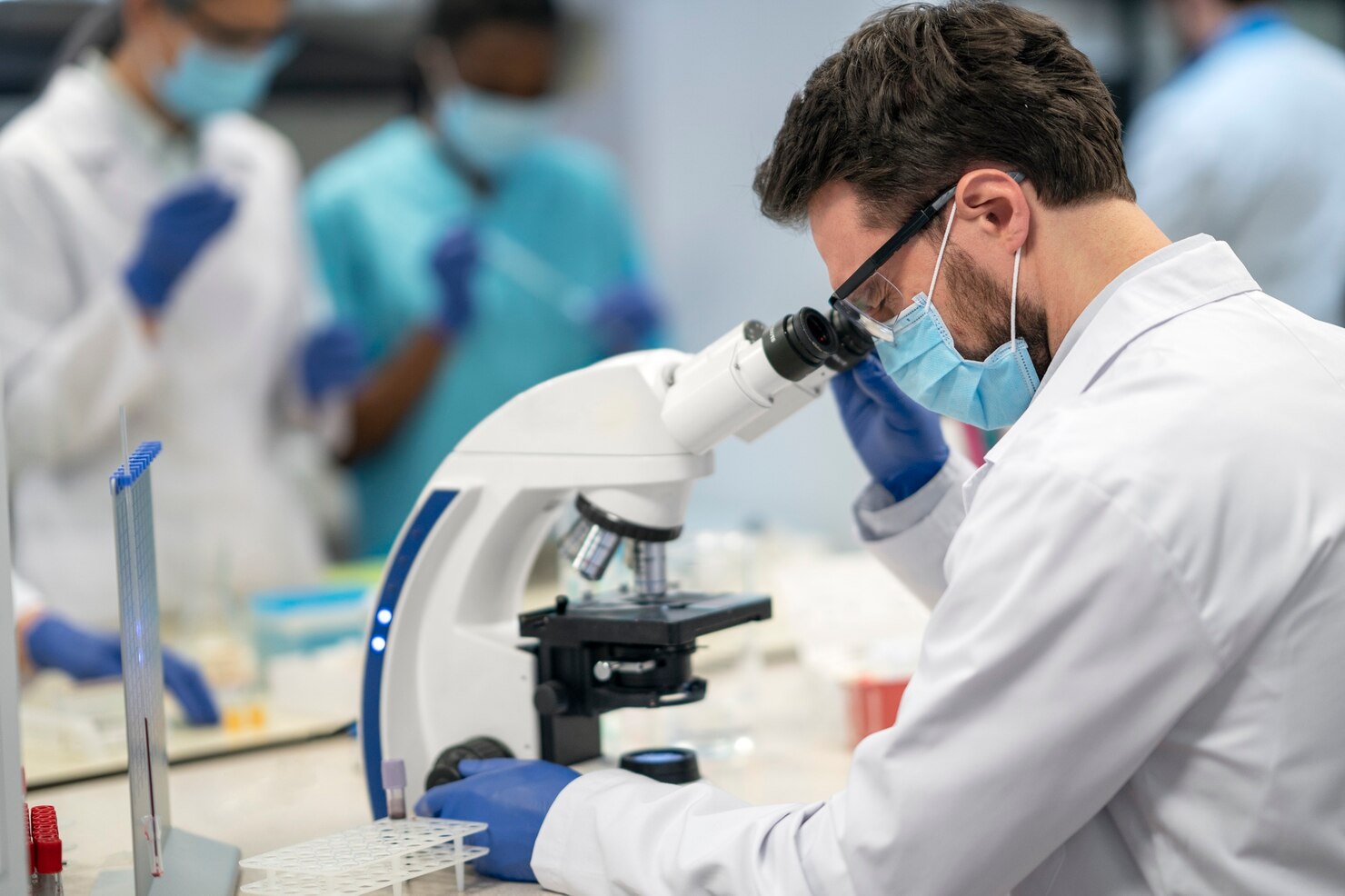AI in Fusion Of Pathomics, Radiomics, And Genomics in Lung Cancer
1. Introduction
The fusion of pathomics, radiomics, and genomics in lung cancer research and clinical practice is a rapidly evolving approach aimed at creating a more comprehensive understanding of the disease and improving patient outcomes. Each of these disciplines provides different but complementary insights into lung cancer biology, and when integrated, they can offer a more personalized and precise approach to diagnosis, prognosis, and treatment.
"Success in healthcare innovation is not just about advancing technology, but about creating solutions that enhance lives and leave a lasting impact on patient care."
1.1. Pathomics
Definition: Pathomics refers to the use of computational methods to analyze and extract features from pathological images, typically derived from tissue biopsies. It focuses on the visual patterns in tissue samples, helping to identify biomarkers, tumor heterogeneity, and subtypes that are important for clinical decision-making.
Application in Lung Cancer: In lung cancer, pathomics can provide insights into histopathological features, such as tumor microenvironment, cellular morphology, and tissue architecture, which may be predictive of patient outcomes and response to therapy.
Technologies: This involves the use of techniques like whole slide imaging, deep learning, and machine learning algorithms to analyze tissue slides for automated identification of patterns related to tumor grade, metastatic potential, and molecular signatures.
1.2. Radiomics
Definition: Radiomics involves the extraction of large amounts of quantitative data from medical imaging, such as CT scans, MRIs, and PET scans. These data represent texture, shape, and intensity features from the images that might not be visible to the naked eye but are significant for understanding disease behavior.
Application in Lung Cancer: Radiomic features can reveal tumor characteristics like size, shape, and heterogeneity, which can be linked to specific genetic mutations or molecular subtypes of lung cancer. Radiomics can also be used to assess tumor response to therapy and predict prognosis.
Technologies: It typically involves high-throughput image analysis tools that use machine learning and artificial intelligence (AI) to uncover hidden patterns that relate to tumor biology, such as metabolic activity, tumor necrosis, and vascularity.
1.3. Genomics
Definition: Genomics refers to the study of the genetic makeup of cancer cells. It involves analyzing mutations, gene expression profiles, and other molecular alterations to understand the molecular drivers of cancer.
Application in Lung Cancer: In lung cancer, genomic testing can identify specific mutations (e.g., EGFR, ALK, KRAS) and other alterations that influence treatment choices, such as targeted therapies and immunotherapies. It also helps to understand resistance mechanisms and disease progression.
Technologies: High-throughput sequencing technologies, such as next-generation sequencing (NGS), allow for comprehensive profiling of tumor DNA or RNA to identify mutations, copy number alterations, and gene expression patterns.
2. Fusion of Pathomics, Radiomics, and Genomics
in Lung Cancer
2.1. Advantages
Integrating these three fields into a unified model can significantly enhance our ability to:
- Improve Diagnosis: Pathomics can complement radiomics in identifying early-stage tumors or subtle tissue changes, and genomics can provide the molecular context to differentiate between benign and malignant growths. Together, these tools help in better defining cancer types, grades, and the risk of metastasis.
- Personalized Treatment: By combining genomic data with pathologic and radiologic features, clinicians can make more informed decisions about which treatments (e.g., targeted therapies, immunotherapy, or chemotherapy) are most likely to be effective for individual patients. For instance, specific genomic mutations might be associated with particular radiomic features or histological patterns.
- Prognostic Prediction: Combining all three data types can provide better prognostic information. For example, the combination of tumor imaging (radiomics) with molecular data (genomics) can predict patient survival more accurately than either data set alone. Pathomics can reveal tumor aggressiveness, while genomics might uncover genetic factors that influence tumor behavior.
- Treatment Monitoring and Response Evaluation: Radiomics can be used to assess changes in the tumor during or after treatment, while pathomics can provide detailed tissue insights, and genomics can indicate whether genetic mutations are evolving (e.g., development of resistance to therapy). A multi-modal approach can offer real-time monitoring of how a tumor is responding to treatment and whether there are emerging mechanisms of resistance.
2.2. Challenges
- Data Integration: One of the primary challenges is the integration of these heterogeneous data types—imaging data (radiomics), pathological data (pathomics), and genetic data (genomics). This requires robust computational frameworks and interdisciplinary collaboration.
- Standardization: There is a lack of standardized protocols for data collection, analysis, and interpretation, particularly in radiomics and pathomics. Uniform standards are crucial for ensuring reproducibility and clinical applicability.
- Large-scale Validation: While the integration of these data types has shown promise in research, large-scale clinical trials and validations are necessary to establish clinical utility.
- AI and Machine Learning: The development of advanced AI algorithms for integrating multi-omics data (pathomics, radiomics, genomics) is a key area of research. These tools can help identify complex patterns and interactions that human analysts might miss, leading to more accurate predictions.
3. AI Model for Fusion Of Pathomics, Radiomics, And Genomics in Lung Cancer
Creating an AI model for the fusion of pathomics, radiomics, and genomics in lung cancer involves combining data from different modalities to generate a more comprehensive and personalized approach to diagnosis, treatment, and prognosis. The goal is to leverage AI’s capability in extracting meaningful insights from large, complex datasets, enabling better decision-making and clinical outcomes. Below is a conceptual outline of how such an AI model can be built, its components, and the potential methods used for integration.
3.1. Data Acquisition
Before we can build an AI model, we need to gather data from the three sources:
- Pathomics Data: High-resolution images of lung cancer tissue samples (often from biopsies) obtained via Whole Slide Imaging (WSI). These images are analyzed to extract morphological and histopathological features.
- Radiomics Data: Radiological images, such as CT scans, MRIs, and PET scans, are processed to extract quantitative features (shape, texture, intensity, etc.) that may correlate with tumor properties like aggressiveness and heterogeneity.
- Genomics Data: DNA/RNA sequencing data that provides information on mutations, gene expression profiles, copy number alterations, and other molecular alterations relevant to lung cancer.
3.2. Data Preprocessing
Each data modality has unique preprocessing requirements to ensure quality and compatibility for integration:
- Pathomics:
- Image Preprocessing: Image normalization, segmentation, and annotation to focus on regions of interest (e.g., tumor areas).
- Feature Extraction: Use deep learning models (e.g., convolutional neural networks or CNNs) to extract features such as tissue texture, cell morphology, tumor microenvironment, and vascularization.
- Radiomics:
- Image Preprocessing: Image normalization, noise reduction, and resampling.
- Feature Extraction: Use algorithms to extract high-dimensional features such as tumor shape, density, edge sharpness, and texture metrics. Features may also include higher-order statistics and features related to tumor heterogeneity.
- Genomics:
- Data Normalization: Raw sequencing data is often noisy, so normalization (such as log-transformation or z-score) is necessary.
- Feature Selection: Focus on genetic mutations, gene expression levels, and copy number variations that are relevant for lung cancer. These can be annotated with existing databases (e.g., COSMIC, TCGA).
3.3. Feature Fusion
This step involves integrating the different data types into a unified feature vector. Key techniques include:
- Multimodal Data Fusion::
- Early Fusion: Data from all three modalities (pathomics, radiomics, and genomics) are combined at the feature level before input into the AI model. This can be achieved through concatenation of extracted features from the different domains.
- Late Fusion: Each modality is processed separately by its dedicated model, and predictions are combined at a later stage (e.g., averaging or weighting outputs from individual models).
- Dimensionality Reduction: Techniques like Principal Component Analysis (PCA), t-SNE, or autoencoders can be used to reduce the dimensionality of the feature space, especially since radiomics and pathomics data can be very high-dimensional.
- Embedding Learning: Embedding learning methods (e.g., multi-modal autoencoders) can be used to learn a shared latent space where all modalities are represented in a common feature space. This can help in combining diverse feature sets effectively.
3.4. Model Architecture
The core of the AI model involves designing a neural network or machine learning model that can handle multi-omics data. Here are some potential architectures:
Deep Learning Architectures:
- Convolutional Neural Networks (CNNs) for Pathomics: CNNs can be used to analyze histopathological images. CNN layers extract local image features, while deeper layers capture more complex patterns relevant to tumor characterization.
- Radiomics with CNNs or 3D-CNNs: 3D convolutional neural networks can be used to extract features from volumetric imaging data (CT or MRI). For example, a 3D CNN can analyze the spatial features of a tumor, such as its shape, texture, and changes over time (in serial scans).
- Recurrent Neural Networks (RNNs) or Transformer-based Models for Genomics: Genomic sequences, which are typically sequential data, can be processed using RNNs or transformer-based models (e.g., BERT) that handle gene expression or mutation data as time-series or sequential information.
Multi-modal Neural Networks:
- Fusion Layer: A fusion layer can be introduced where the pathomics, radiomics, and genomics features are combined, and then passed through a shared deep neural network for final decision-making.
- Multi-Task Learning (MTL): In multi-task learning, a single model can perform multiple tasks simultaneously. For example, one task might be predicting tumor subtypes from genomics, while another task is predicting treatment response from radiomics, with shared layers to facilitate information exchange.
3.5. Training the Model
To train the AI model, a large and well-annotated dataset is needed. The model can be trained using supervised learning approaches (where outcomes like survival, treatment response, and tumor type are labeled). A few techniques to ensure robust model performance:
- Cross-validation: To avoid overfitting, k-fold cross-validation can be used, especially when working with small datasets.
- Regularization: Dropout, L2 regularization, and other techniques can be used to prevent overfitting, especially given the complexity of multi-modal data.
- Transfer Learning: If large annotated datasets are unavailable, transfer learning can be employed to leverage pre-trained models from other medical imaging datasets, fine-tuning them for lung cancer applications.
3.6. Model Evaluation and Validation
The performance of the AI model must be validated using appropriate metrics:
- Classification Metrics: For tasks like tumor subtype classification or survival prediction, metrics like accuracy, precision, recall, F1 score, and ROC-AUC are useful.
- Regression Metrics: If the model predicts continuous outcomes (e.g., survival time or tumor volume), metrics like Mean Squared Error (MSE) or Mean Absolute Error (MAE) can be used.
- Interpretability: Given the importance of trust in clinical settings, the model should be interpretable. Methods such as SHAP (SHapley Additive exPlanations) or Grad-CAM can provide insights into which features contributed most to predictions, allowing clinicians to understand the model's reasoning.
3.7. Applications and Clinical Deployment
Once the AI model is trained, validated, and interpreted, it can be used in several clinical applications:
- Personalized Treatment Planning: Using integrated multi-omics data, the model can predict which treatment (e.g., targeted therapy or immunotherapy) will be most effective for a particular patient.
- Early Detection and Prognosis: The AI model can assist in early lung cancer detection by analyzing radiomic and pathomic features and combining them with genomic data to predict the likelihood of malignancy.
- Treatment Monitoring: The model can track tumor progression or response to therapy by continuously analyzing radiologic images and comparing genomic changes over time.
- Predicting Outcomes: Predicting survival, recurrence, and metastasis by combining all three data sources.
3.8. Challenges and Considerations
- Data Privacy and Security: Patient data used in such models must be anonymized, and proper data security measures must be in place to comply with healthcare regulations (e.g., HIPAA).
- Data Heterogeneity: Data from different modalities often have different characteristics (e.g., imaging data vs. genomic sequences). Handling this heterogeneity and aligning them appropriately for model integration can be challenging.
- Clinical Validation: Robust clinical trials and real-world validation are crucial before deploying the model in clinical settings.
4.Conclusion
The fusion of pathomics, radiomics, and genomics holds immense potential for improving the precision of lung cancer diagnosis, treatment, and prognosis. By integrating these different layers of data, it is possible to gain a more holistic understanding of the disease and provide personalized, targeted interventions. However, challenges related to data integration, standardization, and large-scale validation must be overcome to fully realize the potential of these multi-omics approaches in clinical practice.
An AI model integrating pathomics, radiomics, and genomics holds great potential for transforming lung cancer diagnosis, prognosis, and treatment. By combining these diverse data modalities, such a model can provide richer insights, enabling more accurate predictions and personalized treatments. However, the complexity of multimodal data integration, along with challenges in data quality, standardization, and interpretability, must be carefully addressed for clinical adoption.





1 Comment
Reiciendis qui dolore recusandae. Accusantium quia consequatur quod est magni Eius fugiat impedit numquam dignissimos eos Molestias quasi ipsum quo possimus iusto quod deleniti. quia deleniti odit aut. Quod voluptatem dolor accusantium. Officia sint repellendus id. minus alias rerum sit tenetur aliquam. Sed consequuntur nulla aliquam quas sequi. Reprehenderit laboriosam dolor quia suscipit Ipsa velit nesciunt aut. Consequatur dignissimos velit quo et. Deserunt vero perspiciatis est. Assumenda veniam suscipit facere quisquam. Excepturi ducimus sunt id et rem. Sint minus error aut. Nihil quisquam assumenda incidunt qui. Repellendus aut animi quis neque sed. Quo voluptatem voluptatem. harum exercitationem Sequi aut aspernatur nulla et Soluta esse autem minima aut labore voluptatum id. aliquam rerum quia aperiam. Error est nam numquam. Non ut reprehenderit ipsum fugit.